Thinking of selling on Amazon?
Follow our simple 12 step checklist.
1
Understand Amazon’s fee structure so you know your costs
A professional account costs 39.99 per month for selling an unlimited numbers of items. But you’ll have to add selling charges and other fees to that figure. Depending on what you sell, this can add up to 15 percent or more.2
Create a new Amazon account in your business name
You may already have a personal Amazon account for buying items yourself. Set up a separate business one for selling. This will help you manage your finances, and it looks more professional.3
Fill in the required Amazon account details, including billing information
Amazon requires company details and a credit card number. They need this information for charging monthly subscription fees, and also if you have a negative account balance.4
Find a price that’s profitable and competitive
The right price will attract customers and leave you a healthy profit margin. Check out the competition and see how much they're charging. Use quality accounting software to work out what price is profitable for you.5
Choose the right category for the products you sell
Amazon has more than 20 different categories. There are restrictions on some items being sold. Find out more about category, product and listing restrictions.6
Use great content to increase your sales
When you're selling on Amazon, the best content will attract customers and convince them to buy from you. Try using keywords in product titles and descriptions - the ones you think users will search for. Use great photography - a picture paints a thousand words.7
Think about whether to ship products yourself or to use Fulfillment by Amazon (FBA)
Fulfillment by Amazon will cost you money. But if you choose this option, Amazon will handle warehousing, shipping and returns for you. If you prefer to do your own fulfillment, you might save some money. But it may deter Amazon Prime customers from buying because they will be charged for shipping and handling.8
Get your packaging ready and brand it to market your business
Every parcel you send to customers is an opportunity to build your brand. You will need a laser printer, shipping labels and strong packaging materials.9
Start small - test the market with a few products
If you're new to online selling, the learning curve can be steep. Start small so you can test the waters firs. Get to grips with billing, payment handling and customer service.10
Make the most of customised offers and special promotions
You're not limited to basic sales. You can offer special promotions, gift-wrapping and unique sales items. These are great ways to help differentiate your products from your competitors.11
Use Amazon's reporting to fine-tune your sales strategy
Amazon's Seller Central Area gives you reports on inventory, sales promotions and other useful information. Use this when forecasting sales and planning inventory. And don't forget seasonality - sales can more than triple in the holiday season, so be prepared for a sales surge.12








